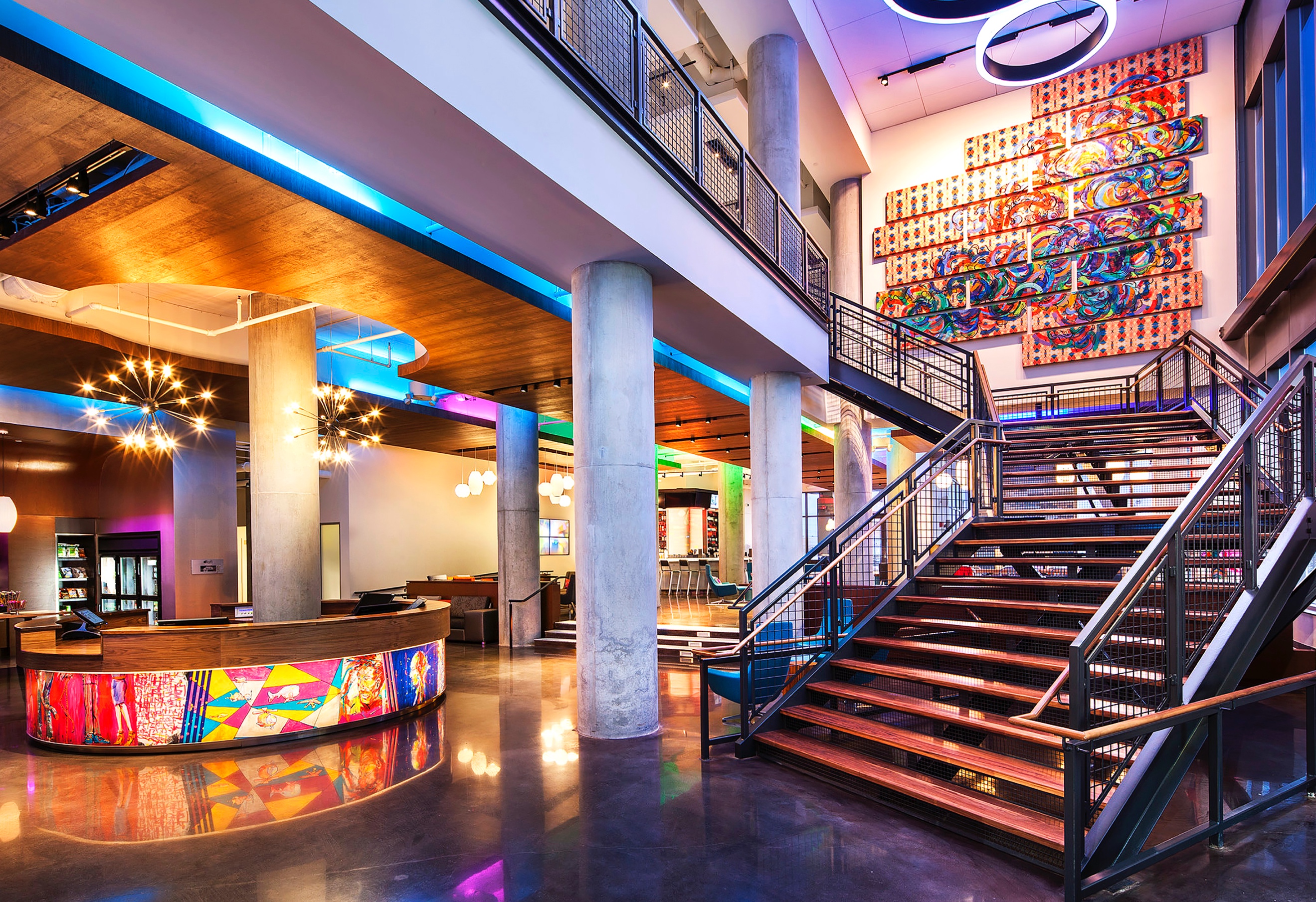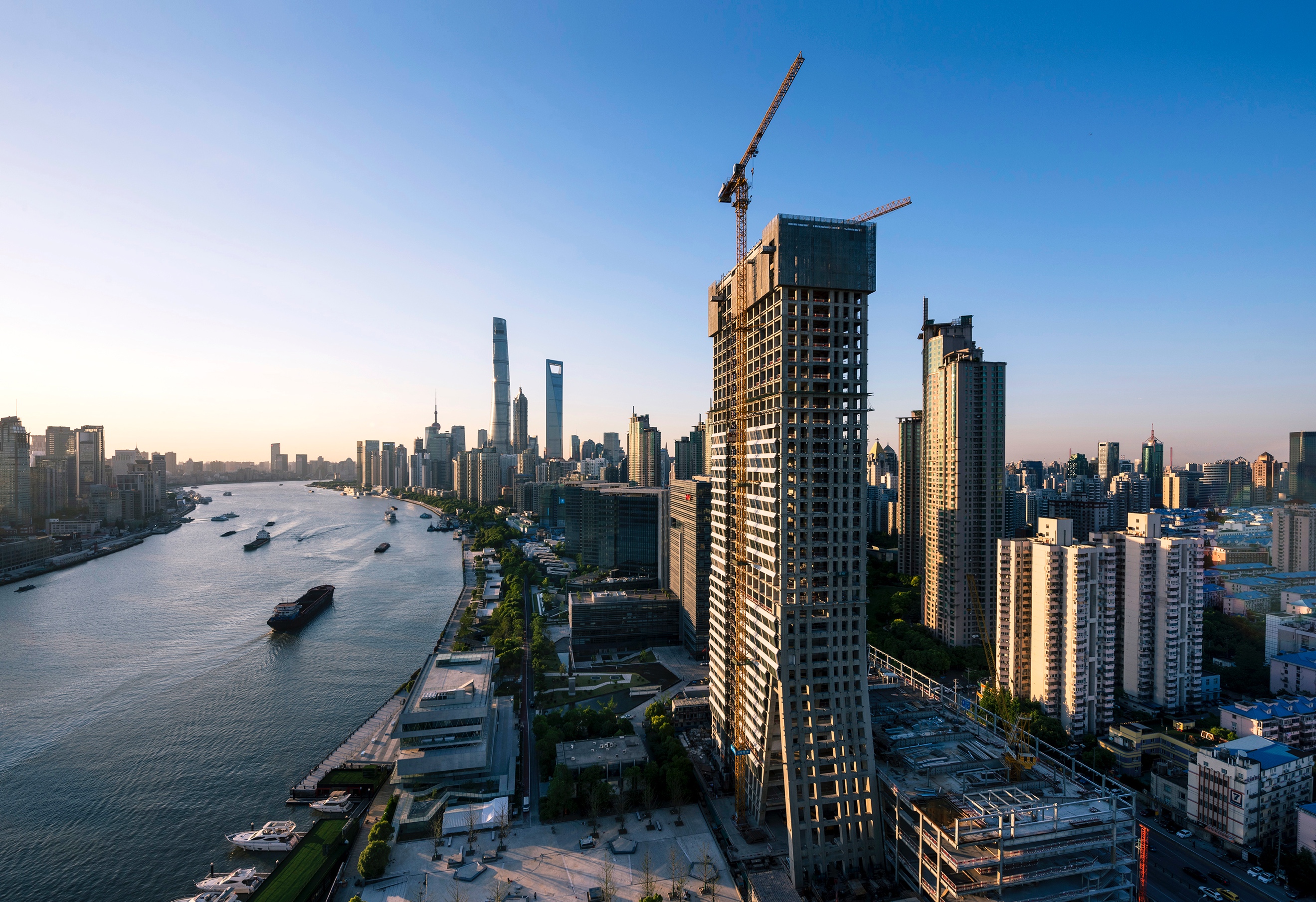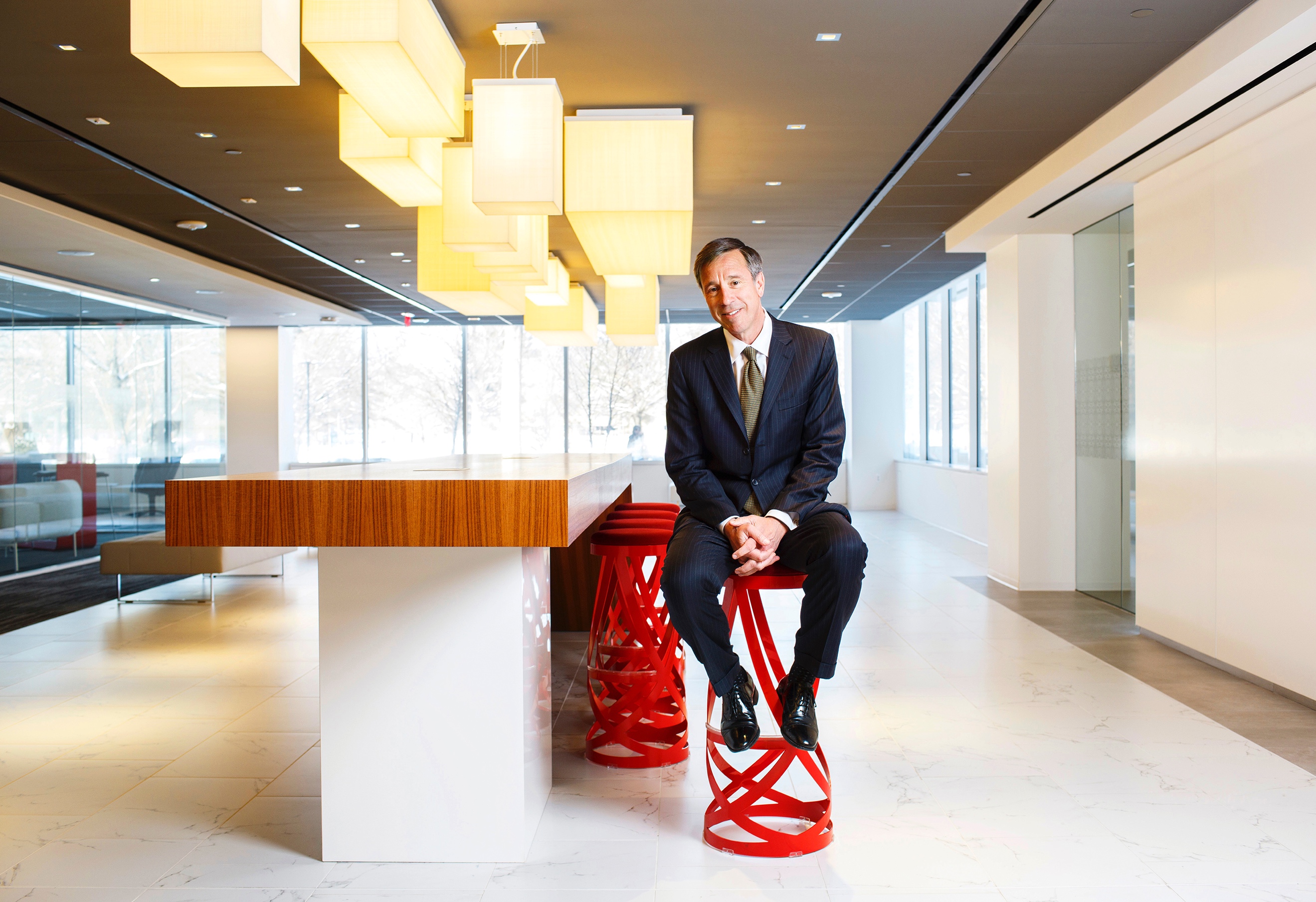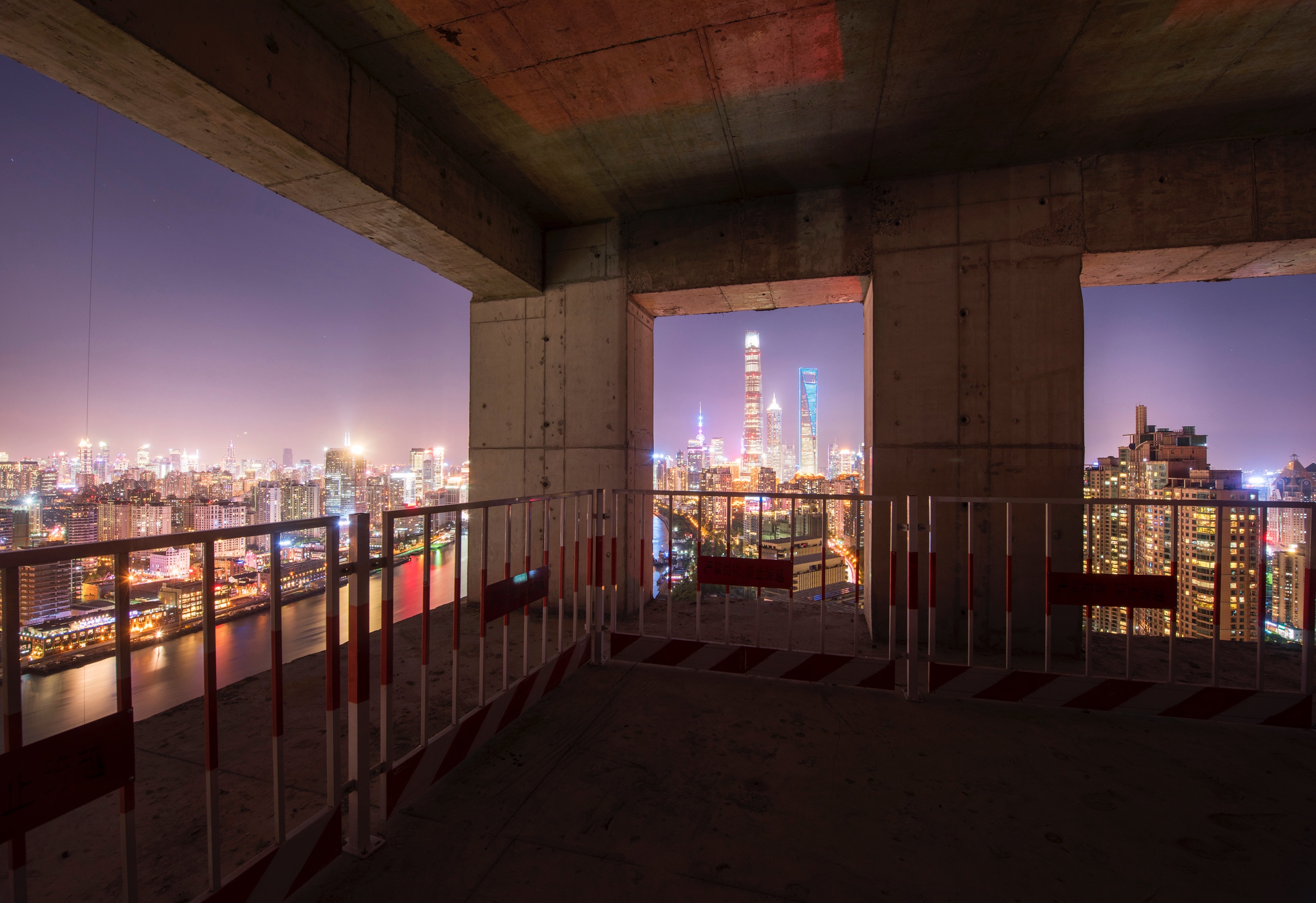為了抵擋Airbnb,,這家酒店拼了 | 萬(wàn)豪報(bào)道

|
蘇安勵(lì)重回恒河岸邊,。他回憶起11年前攜太太和四個(gè)孩子去印度圣城瓦拉納西旅行的情景,“那是一種感官超載,?!彼难凵窕秀遍g有些迷離?!吧袷サ幕鹪嵴谀静拇蠡鹕线M(jìn)行,,許多人在河里沐浴,還有一束束漂浮的蠟燭,?!碧K安勵(lì)追憶說(shuō)。一家人的導(dǎo)游是謝列斯博士,。在蘇安勵(lì)夫婦看來(lái),,這位擁有貴族氣質(zhì)和邪惡笑聲的博學(xué)智者,活脫脫就是“文森特·普萊斯的婆羅門(mén)版本”,。整個(gè)經(jīng)歷“超級(jí)愉悅,。”蘇安勵(lì)說(shuō),。 作為酒店巨頭萬(wàn)豪國(guó)際的首席執(zhí)行官,,蘇安勵(lì)已經(jīng)讓旅行成為他的工作,。但只需跟他聊上幾分鐘,你很快就會(huì)發(fā)現(xiàn),,旅行也是他的個(gè)人愛(ài)好,。在位于馬里蘭州貝塞斯達(dá)市的萬(wàn)豪總部,他的六樓辦公室擺放著長(zhǎng)矛和弓箭等狩獵工具,。這些飾品皆是他的父母從新幾內(nèi)亞帶回的——蘇安勵(lì)的父母是路德教會(huì)傳教士,,在日本將他撫養(yǎng)成人。墻壁上掛著許多關(guān)于他自身冒險(xiǎn)經(jīng)歷的照片證據(jù),,其中有一組照片拍攝于乞力馬扎羅山頂,。蘇安勵(lì)表示,“探索新地方是我們一家人最難忘的相聚時(shí)光之源,?!?/p> 蘇安勵(lì)堅(jiān)稱(chēng),有這種愛(ài)好的絕不止他一人,。在世界各地,,熱愛(ài)旅行的人越來(lái)越多。事實(shí)上,,他認(rèn)為,,全球旅游和酒店業(yè)正在重新進(jìn)入一個(gè)黃金時(shí)代。蘇安勵(lì)指出,,迅速壯大的中國(guó)新中產(chǎn)階級(jí)是一個(gè)極其龐大的潛在游客群體,,他們渴望到北京之外的世界走一走,,看一看,。至于美國(guó)的千禧一代,他認(rèn)為他們更加青睞于創(chuàng)造記憶(并拍攝Instagram圖片),,而不是購(gòu)物,。“相較于購(gòu)物欲望,,他們更加渴望新鮮且令人興奮的體驗(yàn),。”他說(shuō),。 |
Arne Sorenson is back on the banks of the Ganges River. “It was sensory overload,” he says, a faraway look in his eyes as he recalls a trip to India’s holy city of Varanasi 11 years ago with his wife and their four children. “There were holy cremations being performed on timber fires, throngs of people bathing in the river, and clusters of floating candles.” The family’s guide, Sorenson recounts, was one Dr. Shailesh, a learned sage with an aristocratic air and a wicked laugh who reminded Sorenson and his wife of “a Brahman version of Vincent Price.” The overall experience, says Sorenson, was “super intense.” As the CEO of hotel colossus Marriott International (mar), Sorenson has made travel his business. But spend a few minutes with him, and it quickly becomes clear that it’s also a personal passion. His sixth-floor corner office at Marriott’s headquarters in Bethesda, Md., is decorated with spears and bows and arrows that his parents, Lutheran missionaries who raised him in Japan, brought back from New Guinea. And the walls feature ample photographic evidence of his own adventures, such as a group shot taken at the summit of Mount Kilimanjaro. Says Sorenson: “Exploring new places is the source of my family’s most unforgettable times together.” And it’s not just him, insists Sorenson. A growing number of people worldwide share his passion. Indeed, Sorenson believes we are entering a new golden age in travel and hospitality. He points to China’s fast--growing new middle class, a vast cohort of potential travelers who are eager to see the world beyond Beijing. Closer to home, he cites the preference of the millennial generation for making memories (and snapping Instagram pics) over shopping. “They want fresh, exciting experiences far more than they want to buy stuff,” he says. |

|
正是這種根深蒂固的信念,,推動(dòng)蘇安勵(lì)為他的公司策劃了一筆震驚業(yè)界的轉(zhuǎn)型交易:去年9月份,,萬(wàn)豪斥資136億美元收購(gòu)了喜達(dá)屋酒店與度假村集團(tuán),由此為萬(wàn)豪的資產(chǎn)組合增添了瑞吉,、威斯汀和W等標(biāo)志性品牌,,以及福朋這類(lèi)有利可圖的經(jīng)濟(jì)型酒店品牌,。在這樁收購(gòu)交易之前,萬(wàn)豪與希爾頓并列世界上最大的酒店公司?,F(xiàn)在,,它正式躋身為全球酒店業(yè)霸主。這筆交易為萬(wàn)豪新增38.144萬(wàn)間客房,,其客房總數(shù)由此飆漲到120.3萬(wàn)間——比希爾頓的客房數(shù)量足足多了50%,,比世界第三大酒店集團(tuán)英國(guó)洲際酒店多了62%。現(xiàn)如今,,萬(wàn)豪控制著北美地區(qū)七分之一的酒店,,在全球酒店的占比高達(dá)十四分之一以上。 收購(gòu)喜達(dá)屋,,僅僅是萬(wàn)豪史詩(shī)般增長(zhǎng)計(jì)劃的開(kāi)端,。在今年的《財(cái)富》500強(qiáng)排行榜上,萬(wàn)豪憑借2016年斬獲的170億美元營(yíng)收,,位列第163位?,F(xiàn)年58歲的索倫森承諾,萬(wàn)豪致力于在未來(lái)三年年均新增客房10萬(wàn)間——這一數(shù)字比萬(wàn)豪和喜達(dá)屋在2016年新開(kāi)設(shè)的客房總和還要多,。最令人震驚,,或者說(shuō)最可怕的統(tǒng)計(jì)數(shù)字是,在北美和全球范圍內(nèi)在建的所有酒店客房中,,即將由萬(wàn)豪管理或特許經(jīng)營(yíng)的客房占比分別高達(dá)36%和23%,。到目前為止,華爾街似乎贊成這個(gè)計(jì)劃,。截至5月底,,萬(wàn)豪股價(jià)上漲了60%。相較之下,,標(biāo)準(zhǔn)普爾500指數(shù)在過(guò)去一年僅上漲15%,。 蘇安勵(lì)正在以業(yè)界領(lǐng)導(dǎo)者此前從未有過(guò)的決絕姿態(tài),孤注一擲地豪賭酒店業(yè),。然而,,萬(wàn)豪歷史性擴(kuò)張運(yùn)動(dòng)的成功,絕非板上釘釘之事,。這家公司面臨一些日益嚴(yán)峻的重大挑戰(zhàn),。 對(duì)傳統(tǒng)酒店行業(yè)最明顯的威脅,當(dāng)然是Airbnb和其他住宅分享業(yè)務(wù)的興起,。借助于這種商業(yè)模式,,游客只需在塞納河畔或邁阿密海灘預(yù)定一套家庭公寓,就可盡情享受當(dāng)?shù)氐拟孙L(fēng)光。自2008年成立以來(lái),,Airbnb已經(jīng)累計(jì)接待了1.6億“賓客”,,現(xiàn)在擁有300多萬(wàn)套,遍布全球6.5萬(wàn)座城市的房源,。3月份,,這家舊金山初創(chuàng)公司被投資者給予310億美元的估值。在酒店類(lèi)公司中,,只有萬(wàn)豪擁有比它更高的市值(400億美元),。 但來(lái)自數(shù)字世界的顛覆力量并不止于此。現(xiàn)如今,,萬(wàn)豪比以往任何時(shí)候都更加明顯地感受到在線(xiàn)旅行社(OTA)施加的壓力,。在Priceline集團(tuán)和Expedia引領(lǐng)下,旅行網(wǎng)站銷(xiāo)售的酒店客房占全球客房總銷(xiāo)量的比例不斷上升,。(在今年的《財(cái)富》500強(qiáng)排行榜上,,Priceline和Expedia分別位列第268位和第317位。)它們對(duì)于休閑旅客尤其有吸引力,。例如,,這些旅客可以利用Expedia來(lái)比較38.5萬(wàn)家酒店的價(jià)格和位置,其中當(dāng)然包括萬(wàn)豪和其他酒店連鎖品牌的庫(kù)存,。不斷擴(kuò)張的規(guī)模讓在線(xiàn)旅行社獲得了前所未有的影響力,,這在一定程度上蠶食了萬(wàn)豪的地位。 “Airbnb和在線(xiàn)旅行社為我們的孩子而來(lái),?!本频杲?jīng)營(yíng)者伊恩·施拉格如是說(shuō)道。他在20世紀(jì)80年代創(chuàng)建的Morgans酒店,,事實(shí)上創(chuàng)建了精品生活方式這一酒店類(lèi)型?,F(xiàn)在,施拉格正在與萬(wàn)豪合作開(kāi)發(fā)一個(gè)名為Edition的全新酒店品牌,?!八麄兪亲钪苯拥闹旅{?!?/p> 另一個(gè)隱憂(yōu)是,萬(wàn)豪正在最近一波酒店建造浪潮的尾聲加大酒店建造力度,。分析師警告稱(chēng),,這可能很快導(dǎo)致供應(yīng)過(guò)剩。 所有這些似乎并沒(méi)有嚇倒蘇安勵(lì),。他喜歡引用宏大的預(yù)測(cè)數(shù)字來(lái)支持他的樂(lè)觀(guān)主義,。“真正的故事是,有財(cái)力旅行的游客每年都會(huì)新增數(shù)億人,。去年,,世界各地的游客進(jìn)行了12億次國(guó)際旅行。到2030年,,這個(gè)數(shù)字預(yù)計(jì)將達(dá)到18億,。所以,酒店將成為世界上最好的增長(zhǎng)市場(chǎng)之一,?!?/p> 盡管他信心滿(mǎn)滿(mǎn),但蘇安勵(lì)深知,,他不能僅僅建造酒店,,坐等游客入住。為了充分利用喜達(dá)屋交易和他的擴(kuò)張計(jì)劃,,萬(wàn)豪必須必須比以往任何時(shí)候都更加努力地吸引越來(lái)越變化莫測(cè)的旅客,。因此,這家酒店巨頭正在大力投資生活品牌,,推廣其獎(jiǎng)勵(lì)計(jì)劃,,并采取強(qiáng)硬手段對(duì)抗它的在線(xiàn)預(yù)定對(duì)手。所有這些努力是否足以讓蘇安勵(lì)的大膽賭注獲得回報(bào),? 喜達(dá)屋交易 當(dāng)喜達(dá)屋在2015年初首次掛牌出售時(shí),,蘇安勵(lì)并不感興趣。他認(rèn)為,,這場(chǎng)潛在合并交易的規(guī)模和復(fù)雜性將超過(guò)它的優(yōu)勢(shì),。但僅僅幾個(gè)月后,恰恰是這筆交易的宏大規(guī)模,,看上去反倒成為它的一個(gè)優(yōu)點(diǎn),。“我當(dāng)時(shí)正在和Expedia商談一筆極其困難,,幾乎無(wú)法達(dá)成的交易,。我認(rèn)識(shí)到,在未來(lái),,我們需要更大的規(guī)模來(lái)阻止在線(xiàn)旅行社進(jìn)一步侵蝕我們的客房預(yù)訂份額,。”他說(shuō),。 |
This deeply held conviction is a major reason why Sorenson engineered a transformative deal for his company: the $13.6 billion acquisition last September of Starwood Hotels & Resorts, which added such iconic brands as St. Regis, Westin, and W to Marriott’s roster, as well as profitable budget properties such as Four Points. Prior to the purchase, Marriott stood in a virtual tie with Hilton as the world’s largest hotel company. Now it towers over the field. The merger added 381,440 hotel rooms, swelling Marriott’s total portfolio to 1.203 million—50% larger than Hilton’s, and 62% greater than the room count at third-place InterContinental Hotels of the U.K. Today one in seven hotels in North America, and more than one in 14 worldwide, are controlled by Marriott. The Starwood deal is just the beginning of an epic drive for growth at Marriott, which ranks No. 163 on this year’s Fortune 500 with $17 billion in 2016 revenues. Sorenson, 58, pledges to add, on average, around 100,000 rooms annually over the next three years, or 50% more than Marriott and Starwood combined opened in 2016. Here’s probably the most astounding (and maybe the scariest) statistic: 36% of all hotel rooms under construction in North America, and 23% worldwide, are slated to be managed or franchised by Marriott. So far, Wall Street seems to approve of the plan. As of late May, Marriott’s stock price had risen 60%, vs. a 15% gain for the S&P 500 over the past year. Sorenson is going all in on hotels as no industry leader has ever done before. But the success of Marriott’s historic expansion campaign is far from a sure thing. The company faces a few major—and growing—challenges. The most obvious threat to the traditional hotel industry, of course, is the rise of Airbnb and other home-sharing businesses that allow travelers to bask in a local scene by booking, say, a family’s flat on the Seine or a condo in Miami Beach. Since its founding in 2008, Airbnb has recorded more than 160 million “guest arrivals” and now has over 3 million listings worldwide in some 65,000 cities. In March the San Francisco startup was given a valuation of $31 billion by its investors. Among hotel companies, only Marriott’s $40 billion market value is bigger. But the digital disruption doesn’t stop there. Marriott is feeling more pressure than ever today from online travel agencies, or OTAs. Led by the Priceline Group (No. 268 on this year’s 500 list) and Expedia (No. 317), travel sites are selling an increasing share of the world’s hotel rooms. They’re especially attractive to leisure travelers, who, for example, can tap Expedia to compare rates and locations for 385,000 properties, including inventory from Marriott and other major chains. The expanding scale of the OTAs gives them clout and undermines Marriott’s leverage. “Airbnb and the OTAs are coming for our children,” says Ian Schrager, the hotelier who virtually invented the boutique lifestyle category with Morgans hotels in the 1980s and who’s now collaborating with Marriott on a new hotel brand called Edition. “They are a direct mortal threat.” (For more on Schrager, read "The Original Hospitality Disrupter.") If that weren’t enough, Marriott is tripling down on new construction at the tail end of a recent hotel building boom—one that industry analysts warn could soon lead to a glut in supply. None of this appears to daunt Sorenson, who loves citing big macro forecasts that support his optimism. “The story is the hundreds of millions of new people a year with the resources to travel,” he says. “Last year, travelers around the world made 1.2 billion international trips. By 2030, the number’s expected to reach 1.8 billion. So hotels will be one of the world’s best growth markets.” As bullish as he is, Sorenson knows he can’t merely build hotels and wait for the travelers to come. To capitalize on the Starwood deal and his expansion plan, Marriott must battle harder than ever to lure a growing share of fickle travelers. So the hotel giant is investing heavily in lifestyle brands, boosting its rewards programs, and playing hardball with its online booking rivals. Will it be enough for Sorenson’s daring bet to pay off? When Starwood first put itself up for sale in early 2015, Sorenson wasn’t interested. He thought the size and complexity of a potential merger would outweigh the advantages. But just a few months later, the very bigness of the move suddenly looked like a virtue. “I was negotiating an extremely difficult deal with Expedia that almost didn’t get done,” he says. “I recognized that in the future we’d need far larger scale to prevent the OTAs from taking a lot more of our share of bookings.” |

|
隨著蘇安勵(lì)對(duì)喜達(dá)屋的了解越來(lái)越深刻,,他愈加相信,,它是一個(gè)非常理想的收購(gòu)目標(biāo),。喜達(dá)屋將帶來(lái)酒店業(yè)最忠實(shí)的客戶(hù)群:超級(jí)慷慨的喜達(dá)屋優(yōu)先客人獎(jiǎng)勵(lì)計(jì)劃擁有大批會(huì)員?!拔掖_信,,為了讓客人直接通過(guò)我們(而不是在線(xiàn)旅行社)預(yù)訂客房,我們需要一個(gè)更加強(qiáng)大的獎(jiǎng)勵(lì)計(jì)劃,。這是我們的護(hù)城河,。”他說(shuō),。 除忠誠(chéng)度計(jì)劃之外,,喜達(dá)屋還擁有一個(gè)別具特色的酒店資產(chǎn)組合。在合并之前,,萬(wàn)豪旗下19個(gè)品牌高度傾向于中檔市場(chǎng),,其“精選服務(wù)”酒店主要面向?qū)r(jià)格敏感,常年奔波在外的客戶(hù)群,,尤其是萬(wàn)怡酒店,、費(fèi)爾菲爾德套房酒店、居家酒店和春嶺套房酒店,。不少于53%的萬(wàn)豪客房集中在這些有限服務(wù)類(lèi)別中,。相比之下,在喜達(dá)屋旗下的11個(gè)品牌中,,有超過(guò)四分之三的品牌要么是奢華酒店,,比如瑞吉酒店,要么是所謂的高檔酒店——介于真正的奢華類(lèi)別和有限服務(wù)類(lèi)別之間,,包括威斯汀,、艾美和喜來(lái)登等酒店品牌。 |
And the more Sorenson examined Starwood, the more he became convinced that it was an ideal takeover target for Marriott. Starwood would bring with it the most loyal clientele in the business: the members of its super-generous Starwood Preferred Guest rewards program. “I decided that to keep people booking directly through us and not the OTAs, we needed a more powerful rewards program,” says Sorenson. “It’s our moat.” Along with the loyalty program came Starwood’s portfolio of chic, distinctive properties. Prior to the merger, Marriott’s 19 brands were highly tilted toward mid-market, “select service” properties catering to price-conscious road warriors—notably Courtyard, Fairfield Inn & Suites, Residence Inn, and SpringHill Suites. No less than 53% of its rooms clustered in those limited-service categories. By contrast, well over three-quarters of Starwood’s 11-brand portfolio was either in luxury, with properties such as St. Regis, or so-called upper-upscale, the category between true luxury and limited service, consisting of brands like Westin, Le Meridien, and Sheraton. |

|
生活方式酒店旨在讓客人感覺(jué)到他們居住在一個(gè)充滿(mǎn)樂(lè)趣,,健康或具有美學(xué)高度的居所。蘇安勵(lì)相信,,這種精心策劃的服務(wù)方式將像磁石一般,,吸引千禧一代入住。他說(shuō),,如今的年輕旅行者想要的,,絕不止是一張干凈的床鋪和一個(gè)送到客房的漢堡。酒店不僅應(yīng)該擁有頗具設(shè)計(jì)感的裝飾風(fēng)格,,還應(yīng)該與社區(qū)聯(lián)系在一起,,甚至應(yīng)該成為一個(gè)冒險(xiǎn)伙伴。在位于邁阿密海灘的萬(wàn)豪Edition酒店,,狂歡者手持雞尾酒,在一個(gè)地下夜總會(huì)旁邊的溜冰場(chǎng)上愜意地滑冰。 喜達(dá)屋交易為蘇安勵(lì)帶來(lái)了兩個(gè)頗有前途的新生活方式酒店品牌:源宿和雅樂(lè)軒,。在生活方式類(lèi)酒店中,,源宿是唯一一家長(zhǎng)住連鎖酒店。許多新建的源宿連鎖酒店將提供一項(xiàng)極其新穎的服務(wù):4個(gè)房間聚集在一個(gè)公共休息室周?chē)?,旨在吸引為觀(guān)看體育賽事或團(tuán)聚而出行的團(tuán)體——倘若沒(méi)有這種服務(wù),,這些客戶(hù)或許會(huì)選擇合租一個(gè)Airbnb房源。另一方面,,雅樂(lè)軒專(zhuān)為一些對(duì)商務(wù)旅客而言缺少休閑活動(dòng)的中等城市量身打造,。一大吸引力是一個(gè)經(jīng)常舉行卡拉OK之夜,并邀請(qǐng)當(dāng)?shù)匾魳?lè)人演出,,吸引大批當(dāng)?shù)厝斯忸櫟木瓢?。在休息室,賓客們滿(mǎn)對(duì)面地坐在真皮沙發(fā)上聊天,,飲酒,,或者打桌球,下國(guó)際象棋?,F(xiàn)在,,這兩個(gè)品牌共擁有150家酒店。在接下來(lái)的三年中,,這個(gè)數(shù)字預(yù)計(jì)會(huì)翻一番,,客房總數(shù)將從2.5萬(wàn)間增至5萬(wàn)多間。 除千禧一代之外,,這些高度個(gè)性化的酒店開(kāi)始吸引越來(lái)越多更加年長(zhǎng)的傳統(tǒng)旅客,。施拉格表示,所有的酒店都需要通過(guò)這種方式來(lái)留住現(xiàn)有客戶(hù),,更別提吸引新客戶(hù)了,。他說(shuō),Airbnb可以提供一個(gè)寬敞的房子和一間舒適的臥室,,但無(wú)法提供熱鬧非凡的大廳活動(dòng),。“就連萬(wàn)怡酒店也不得不與時(shí)俱進(jìn),。每個(gè)品牌都必須做一些Airbnb做不到的事情,。這就是蘇安勵(lì)的使命?!彼f(shuō),。 輕資產(chǎn)模式 在萬(wàn)豪90年歷史上,蘇安勵(lì)僅僅是第三位CEO,,并且是首位姓氏中不帶“Marriott”的CEO,。他于1996年加入萬(wàn)豪,,隨后拾階而上,最終在2012年執(zhí)掌CEO權(quán)杖,。他身材高大,,和藹可親,無(wú)論是身穿牛仔褲和黑色牛仔靴,,在達(dá)拉斯向一眾萬(wàn)豪高管發(fā)表演說(shuō),,還是身著西裝,在他的辦公室潛心工作,,他看上去都同樣地舒適自在,。 在加入萬(wàn)豪之前,蘇安勵(lì)是華盛頓瑞生國(guó)際律師事務(wù)所的合伙人,,專(zhuān)門(mén)從事兼并和收購(gòu)訴訟業(yè)務(wù),。當(dāng)這位前并購(gòu)律師權(quán)衡喜達(dá)屋交易的時(shí)候,他認(rèn)識(shí)到了另一個(gè)潛在的協(xié)同效應(yīng),。像萬(wàn)豪一樣,,喜達(dá)屋也采用了在酒店業(yè)長(zhǎng)期占據(jù)主導(dǎo)地位的輕資產(chǎn)模式。但蘇安勵(lì)感到,,相較于喜達(dá)屋,,萬(wàn)豪更加擅長(zhǎng)金融攻防戰(zhàn),進(jìn)而為他提供了一個(gè)提升喜達(dá)屋投資組合盈利能力的機(jī)會(huì),。 盡管它經(jīng)常被描述為一家單調(diào)乏味,,管理著千篇一律的物業(yè)的酒店運(yùn)營(yíng)商,但萬(wàn)豪(起源于1927年的萬(wàn)豪最初是一個(gè)麥根沙士路邊攤)其實(shí)是美國(guó)酒店業(yè)最卓越的財(cái)務(wù)先鋒之一,。萬(wàn)豪模板的設(shè)計(jì)師是兩位富有傳奇色彩的首席財(cái)務(wù)官:20世紀(jì)70年代中期加盟萬(wàn)豪的加里·威爾遜,,以及90年代初期接手的史蒂芬·博倫巴赫——他后來(lái)成為希爾頓酒店的掌門(mén)人。他們的核心原則是,,萬(wàn)豪應(yīng)該擁有盡可能少的實(shí)體酒店,。相反,這家公司應(yīng)該專(zhuān)注于兩項(xiàng)業(yè)務(wù):管理和特許經(jīng)營(yíng)他人擁有的酒店,。時(shí)至今日,,萬(wàn)豪仍然采用相同的運(yùn)營(yíng)模式。 對(duì)于它管理的美國(guó)酒店,,萬(wàn)豪提供所有人員,,從客房服務(wù)生到總經(jīng)理。在總數(shù)高達(dá)22.65萬(wàn)的萬(wàn)豪員工大軍中,,這些“依附于物業(yè)”的員工大約有20萬(wàn)人,。酒店業(yè)主向萬(wàn)豪全額報(bào)銷(xiāo)這些人員的工資開(kāi)支。萬(wàn)豪還以成本價(jià)提供其他主要服務(wù):其一是銷(xiāo)售和營(yíng)銷(xiāo),,包括向會(huì)議組織者批量銷(xiāo)售客房,。其二是管理兩個(gè)尚未被合并的忠誠(chéng)度計(jì)劃:萬(wàn)豪禮賞計(jì)劃和喜達(dá)屋優(yōu)先顧客計(jì)劃,。第三項(xiàng)服務(wù)包括運(yùn)營(yíng)龐大的電話(huà)和Marriott.com預(yù)訂系統(tǒng)——在萬(wàn)豪管理和特許經(jīng)營(yíng)的酒店中,至少有70%的客房是通過(guò)這套系統(tǒng)預(yù)定的,。 這些物業(yè)為萬(wàn)豪提供了兩個(gè)利潤(rùn)源泉:萬(wàn)豪收取大約相當(dāng)于酒店總收入3%的管理費(fèi),。此外,,在酒店所有者首先提取一個(gè)最低限額收入之后,,萬(wàn)豪還可以從美國(guó)物業(yè)中獲得一筆相當(dāng)于經(jīng)營(yíng)性現(xiàn)金流25%的獎(jiǎng)勵(lì)性費(fèi)用。 對(duì)于它特許經(jīng)營(yíng)的物業(yè),,這套系統(tǒng)更簡(jiǎn)單一些——主要是因?yàn)闃I(yè)主要么自己經(jīng)營(yíng)酒店,,要么將管理外包給承包商。所以,,萬(wàn)豪不提供勞動(dòng)力,,但它的確以成本價(jià)提供忠誠(chéng)度計(jì)劃和預(yù)訂系統(tǒng)的管理服務(wù)。特許經(jīng)營(yíng)者可以自己從事銷(xiāo)售和營(yíng)銷(xiāo)工作,,來(lái)吸引團(tuán)隊(duì)生意,,也可以將這些工作外包給萬(wàn)豪。萬(wàn)豪的唯一利潤(rùn)源泉是一筆特許權(quán)使用費(fèi),,相當(dāng)于客房收入的5%到6%,。萬(wàn)豪還提供支持服務(wù)。萬(wàn)豪加盟店MCR開(kāi)發(fā)公司首席執(zhí)行官泰勒·莫爾斯表示,,“很簡(jiǎn)單,,我之所以花錢(qián)讓萬(wàn)豪幫助我填充客房,是因?yàn)檫@樣做比我自己做營(yíng)銷(xiāo),,并付錢(qián)給在線(xiàn)旅行社更加便宜,。” 這是輕資產(chǎn)模式的美妙之處:它使得萬(wàn)豪能夠利用一小塊資本推動(dòng)特許權(quán)使用費(fèi)收入迅速增長(zhǎng),,而不必像其他開(kāi)發(fā)商那樣斥巨資建造越來(lái)越多的酒店以擴(kuò)大業(yè)務(wù)規(guī)模,。事實(shí)證明,蘇安勵(lì)特別擅長(zhǎng)玩這種游戲,。從他出任CEO的2012年到2015年,,萬(wàn)豪從管理和特許經(jīng)營(yíng)中獲得的收入,再加上諸如信用卡費(fèi)用這類(lèi)額外收入,,增長(zhǎng)了31%,,達(dá)到20億美元。 不論以哪種指標(biāo)來(lái)評(píng)判,,萬(wàn)豪的盈利能力都令人嘆為觀(guān)止,。比如,其營(yíng)業(yè)利潤(rùn)率徘徊在50%左右,。原因是雙重的,。首先,,萬(wàn)豪的開(kāi)支增幅遠(yuǎn)遠(yuǎn)低于它獲得的費(fèi)用增幅,由此提供了強(qiáng)大的“經(jīng)營(yíng)杠桿”,。其二,,不同于房地產(chǎn)開(kāi)發(fā)商,萬(wàn)豪受惠于最低限度的利息費(fèi)用和折舊(這是資本成本的函數(shù)),。龐大的自由現(xiàn)金流使它能夠回購(gòu)大量股票,。在蘇安勵(lì)的任期內(nèi),萬(wàn)豪的股票創(chuàng)造了高達(dá)23.1%的年化收益率,。 |
Lifestyle hotels are designed to make guests feel that they’re staying in places catering to their fun-seeking, healthy, or aesthetically elevated lifestyles. Sorenson believes this curated approach will be a magnet for millennials. Today’s young travelers, he says, want more than a clean bed and a room-service burger. A hotel should not only feature designer decor but also connect with the community—and even be a partner in adventure. Revelers at Marriott’s Edition in Miami Beach skate around an ice rink next to a subterranean nightclub, cocktails in hand. The Starwood deal has handed Sorenson two promising new lifestyle brands: Element and Aloft. Element is the only extended-stay hotel chain in the lifestyle space. And many of the new ones will have a completely novel offering: four rooms clustered around a communal lounge to attract groups traveling for sports events or reunions—customers who might otherwise rent an Airbnb together. Aloft, on the other hand, is tailored for midsize cities with fewer activities for business travelers. The central attraction is a bar that lures plenty of locals by offering karaoke nights and performances by the town’s musicians. Folks chat and drink in the lounge while shooting pool or playing checkers seated on facing leather sofas. Today the two brands have a total of 150 hotels. Over the next three years that number is expected to double, raising the room count from 25,000 to more than 50,000. The growing shift toward these highly individualized venues is beginning to capture a growing number of older, traditional travelers as well as millennials. According to Schrager, all hotels will need to go this way to keep the clients they have now, let alone attract new ones. Airbnb can provide a house and a bedroom, he says, but not the beehive of activity in the lobby. “Even the Courtyards have to evolve,” he says. “Every brand needs to do something that Airbnb can’t do. That’s Arne’s mission.” Sorenson is just the third CEO in Marriott’s 90-year history, and the first without the last name Marriott. He joined the company in 1996 and worked his way up through the executive ranks before taking over as CEO in 2012. Tall and affable, he looks equally as comfortable in jeans and black cowboy boots, addressing a group of Marriott execs in Dallas, as he does in a suit back in his office. Prior to Marriott, Sorenson (whose first name is pronounced “Ar-nee”) was a partner at the law firm Latham & Watkins in D.C., where he specialized in merger and acquisition litigation. And as the onetime M&A lawyer weighed the Starwood deal, he recognized another bit of potential synergy: Like Marriott, Starwood employed the same asset-light model that has long ruled the industry. But Marriott, Sorenson felt, was a lot better at financial blocking and tackling than Starwood—creating an opportunity for him to boost the profitability of Starwood’s portfolio. Although it’s often characterized as a plodding manager of cookie-cutter properties, Marriott—which started as a root beer stand in 1927-—is actually one of the great financial pioneers in U.S. industry. The architects of the Marriott template were two legendary CFOs: Gary Wilson starting in the mid-1970s, followed in the early 1990s by Stephen Bollenbach, who later went on to run Hilton. Their core principle was that Marriott should own as little real estate as possible. The company should instead focus on two lines of business: managing and franchising hotels owned by others. Marriott today is still run on the same model. For its managed hotels, Marriott furnishes all personnel in the U.S., from the housekeepers to the general managers. Those “on-property” folks account for about 200,000 of its total workforce of 226,500. The owners of the properties reimburse Marriott for 100% of those personnel expenses. Marriott also provides other major services at cost: The first is sales and marketing, including selling blocks of rooms for conventions. The second is managing the two yet-to-be-merged loyalty programs—Marriott Rewards and Starwood Preferred Guest. The third consists of operating the gigantic phone and Marriott.com reservation system, the source of 70% or more of all managed and franchised bookings. Marriott’s profit from these managed properties flows from two sources: It collects management fees of around 3% of total hotel revenues. And it also gets an incentive fee from U.S. properties of up to 25% of operating cash flow, over and above a minimum that owners pocket first. For franchised properties, the system is simpler—chiefly because the owners either operate the hotels themselves, or outsource management to contractors. So Marriott doesn’t provide the workforce, but it does supply, at cost, management of the loyalty program and the reservation system. The franchisees can either do their own sales and marketing to attract group business, or outsource to Marriott. The profit comes from a franchise royalty fee that’s 5% to 6% of room revenue only. Marriott also provides support services. “It’s simple,” says Tyler Morse, CEO of MCR Development, a major Marriott franchisee. “I pay Marriott to fill my rooms because it’s cheaper than doing my own marketing and paying the OTAs.” Here’s the brilliance of the asset-light model: It enables Marriott to rapidly grow fees using tiny dollops of capital rather than the huge investments that developers make to expand their business by building more and more hotels. Sorenson has proved to be a master at the game. From 2012, the year he became CEO, to 2015, Marriott’s fees from management and franchising, as well as such additional income including credit card fees, expanded by 31%, to $2 billion. By any measure, Marriott’s profitability is stellar. Its operating margin, for example, hovers around 50%. The reason is twofold. First, its expenses have expanded a lot less than its fees, providing strong “operating leverage.” Second, unlike real estate developers, Marriott benefits from minimal interest expense and depreciation (a function of capital costs). And its huge free cash flow has enabled it to repurchase lots of shares. Over Sorenson’s tenure, Marriott’s stock has delivered total annualized returns of 23.1%. |

|
但在一段長(zhǎng)達(dá)六年多的繁榮期之后,市場(chǎng)前景看上去相當(dāng)不妙,。問(wèn)題在于:新酒店供應(yīng)過(guò)剩,。“在金融危機(jī)期間,,大批早前建造的酒店紛紛開(kāi)業(yè),,但開(kāi)工建設(shè)的酒店非常少?!本频陿I(yè)研究公司STR高級(jí)副總裁讓·弗賴(lài)塔格說(shuō),。“直到2011年或2012年,,酒店建造熱潮再次涌起,。”拜這種時(shí)差所賜,,從2011年到2015年,,每年入市的客房供應(yīng)量顯著減少??蛻?hù)預(yù)定客房的速度比酒店業(yè)主增添客房的速度更快?,F(xiàn)在,隨著一批新酒店相繼開(kāi)業(yè),,這種情況正在逆轉(zhuǎn),。“供應(yīng)將在2017年超越需求,,這是最近幾年來(lái)的第一次,。”弗賴(lài)塔格說(shuō),。 在蘇安勵(lì)雄心勃勃的增長(zhǎng)計(jì)劃上空,,還籠罩著另一片烏云:在萬(wàn)豪主打的精選服務(wù)酒店領(lǐng)域,供過(guò)于求的問(wèn)題尤其嚴(yán)重。在過(guò)去15年,,萬(wàn)豪的主要增長(zhǎng)引擎是北美地區(qū)的精選服務(wù)酒店——其主要品牌包括萬(wàn)怡酒店,、費(fèi)爾菲爾德套房酒店,以及提供長(zhǎng)住服務(wù)的居家酒店,。這些都是沒(méi)有額外裝飾,,只提供基本服務(wù)的場(chǎng)所。比如,,在費(fèi)爾菲爾德,,客人們是從金屬罐中續(xù)滿(mǎn)其塑料咖啡杯的,而早餐就是一塊放入烤面包機(jī)的百吉餅,。 金融危機(jī)爆發(fā)后,,銀行非常不愿意為昂貴的全方位服務(wù)類(lèi)酒店提供貸款。萬(wàn)豪全球首席開(kāi)發(fā)官托尼·卡波諾表示,,“對(duì)于申請(qǐng)貸款的全方位服務(wù)類(lèi)酒店,銀行要求的股票質(zhì)押比例從20%增長(zhǎng)到40%,?!钡珶o(wú)論是對(duì)放貸人,還是對(duì)于酒店業(yè)主而言,,精選服務(wù)酒店的風(fēng)險(xiǎn)性要低得多,。一家提供全方位服務(wù)的萬(wàn)麗酒店的成本大約為5000萬(wàn)美元,而一家類(lèi)似規(guī)模的費(fèi)爾菲爾德套房酒店的成本則為1500萬(wàn)美元,。換言之,,每間客房的成本分別為25萬(wàn)美元和12萬(wàn)美元。精選服務(wù)類(lèi)酒店過(guò)去是,,現(xiàn)在仍然是更加有利可圖的,。“經(jīng)營(yíng)這類(lèi)酒店只需要大約20名員工,,而且它不需要配備成本不菲,,占據(jù)大量客房空間的宴會(huì)廳或大廚房?!眮喬靥m大諾貝爾投資集團(tuán)CEO米特·沙阿說(shuō),。這家投資公司擁有大約30家萬(wàn)怡酒店和其他萬(wàn)豪精選服務(wù)酒店?!袄麧?rùn)更具持續(xù)性,,因?yàn)楣潭ǔ杀痉浅5汀,!?/p> |
But after a half-dozen boom years, the market going forward looks a lot less favorable. The problem: a glut of new hotel supply. “In the financial crisis, loads of hotels that were started earlier opened, but very few got started,” says Jan Freitag, SVP of hospitality research firm STR. “It wasn’t until 2011 or 2012 that construction heated up again.” Because of the lag, the supply of rooms opening each year was depressed from 2011 to 2015. Customers were booking rooms faster than hotel owners were adding them. As a result, both occupancy and rates surged. Now that scenario is reversing as hotels in the pipeline begin to open. “For the first time in years, supply will outgrow demand in 2017,” says Freitag. Further clouding Sorenson’s ambitious growth plan is that the looming oversupply problem is particularly acute in Marriott’s staple product: select service. During the past 15 years, Marriott’s prime growth engine has been select-service hotels in North America—led by Courtyard, Fairfield, and extended-stay entry Residence Inn. Those are the no-frills venues. In a Fairfield, for example, guests fill their plastic coffee cups from canisters, and breakfast is a bagel popped into a toaster. After the financial crisis, banks became extremely reluctant to lend for expensive, full-service hotels. “The banks went from demanding 20% equity for a full-service hotel to 40%,” says Tony Capuano, Marriott’s global chief development officer. But select service was far less risky—both for lenders and owners. A full-service Renaissance could cost about $50 million, compared with $15 million for a similar-size Fairfield; that’s a cost difference per room of $250,000 vs. $120,000. Select service was, and still is, a lot more profitable. “You can run them with about 20 employees, and you don’t need ballrooms or big kitchens that cost a lot and take the place of rooms,” says Mit Shah, CEO of Noble Investment Group of Atlanta, which owns around 30 Courtyards and other Marriott select-service hotels. “The profits are a lot more consistent, because fixed costs are so low.” |

|
于精選服務(wù)酒店而言,,最大的增長(zhǎng)來(lái)自二級(jí)市場(chǎng),。這些市場(chǎng)擁有很大有些年頭的全方位服務(wù)物業(yè),。卡波諾表示,,“我們認(rèn)為小市場(chǎng)服務(wù)不足,。所以我們派人手持信用卡和地圖去尋找最好的開(kāi)店位置?!遍_(kāi)發(fā)商們瞄準(zhǔn)了北諸如達(dá)科他州邁諾特和密西西比州哈蒂斯堡這類(lèi)城市,。這項(xiàng)戰(zhàn)略為萬(wàn)豪的擴(kuò)張鋪平了道路。從2011年1月至2016年末,,收購(gòu)喜達(dá)屋之前的萬(wàn)豪國(guó)際在北美地區(qū)新增了近9萬(wàn)間精選服務(wù)客房,。 萬(wàn)豪正在指望這些“馱馬”繼續(xù)推動(dòng)銷(xiāo)量增長(zhǎng)。在萬(wàn)豪目前擁有的43萬(wàn)間客房中,,大約40%是費(fèi)爾菲爾德套房酒店,、萬(wàn)怡酒店和北美地區(qū)的其他精選服務(wù)品牌。這些酒店開(kāi)始涌現(xiàn)在越來(lái)越多工業(yè)園區(qū)和數(shù)據(jù)中心對(duì)面的角落里——旁邊經(jīng)常一家希爾頓歡朋酒店或快捷假日酒店,。 山間管理公司擁有或管理53家萬(wàn)豪精選服務(wù)酒店,。其老板杜威·韋弗說(shuō),“我們正在迫近過(guò)度建設(shè)的狀況,?!痹谝恍┑胤剑热缑芪魑鞅戎萁芸诉d和鳳凰城,,市場(chǎng)已經(jīng)飽和,。“我有兩年都沒(méi)買(mǎi)地了,?!彼f(shuō)。 然而,,萬(wàn)豪可以用極具增長(zhǎng)前景的中國(guó)市場(chǎng)彌補(bǔ)美國(guó)酒店業(yè)的頹勢(shì)給它帶來(lái)的不利影響,。酒店業(yè)的共識(shí)是,在未來(lái)十年,,中國(guó)將成為世界上增長(zhǎng)最快的酒店市場(chǎng),。與喜達(dá)屋合并之前,萬(wàn)豪在中國(guó)和亞洲地區(qū)的酒店布局相對(duì)較弱,。相比之下,,在這一區(qū)域,喜達(dá)屋是當(dāng)仁不讓的全球連鎖酒店領(lǐng)導(dǎo)者——主要原因是,,喜達(dá)屋旗下的喜來(lái)登酒店長(zhǎng)期傲居該地區(qū)全方位服務(wù)品牌的頭把交椅,。盡管這筆交易推動(dòng)萬(wàn)豪在大中華區(qū)的酒店數(shù)量飆漲170%,增至264家,但其資產(chǎn)組合主要是一些龐大的全方位服務(wù)類(lèi)酒店,,集中在香港,、北京和天津等最大的門(mén)戶(hù)城市。 但在如今的中國(guó),,蓬勃發(fā)展的領(lǐng)域是國(guó)內(nèi)商務(wù)旅行,。最繁榮的市場(chǎng)是大約15個(gè)人口在400萬(wàn)到1000萬(wàn)之間的城市,特別是溫州和泉州等沿海大都市,。這些二線(xiàn)城市的傳統(tǒng)主導(dǎo)者是當(dāng)?shù)厝藫碛械慕?jīng)濟(jì)型酒店,。但日益富裕,品牌意識(shí)逐漸增強(qiáng)的中國(guó)旅行者渴望體驗(yàn)服務(wù)質(zhì)量更高的酒店服務(wù),。對(duì)于萬(wàn)怡酒店,、費(fèi)爾菲爾德套房酒店和居家酒店這類(lèi)供應(yīng)商來(lái)說(shuō),這是一個(gè)巨大的機(jī)遇,。 今天,,萬(wàn)豪在中國(guó)提供的精選服務(wù)僅限于54家酒店。但在接下來(lái)的幾年中,,萬(wàn)豪的中國(guó)版圖或許足以媲美它過(guò)去五年來(lái)在美國(guó)實(shí)現(xiàn)的巨大增長(zhǎng),。2018年,萬(wàn)豪計(jì)劃在中國(guó)開(kāi)設(shè)56家酒店,,其中包括21家精選服務(wù)酒店。其目標(biāo)是,,到2020年,,在中國(guó)每年開(kāi)設(shè)100家酒店。 在中國(guó)傳播萬(wàn)豪品牌,,也有助于推廣這家酒店巨頭的海外業(yè)務(wù),。中國(guó)的出境游客已經(jīng)領(lǐng)先世界。每年有超過(guò)1億中國(guó)人出國(guó)度假,,或者因公出國(guó),。隨著中產(chǎn)階級(jí)預(yù)計(jì)將從如今的1億人擴(kuò)大到2020年的4億人,圍繞中國(guó)旅游業(yè)的全球市場(chǎng)將呈現(xiàn)井噴勢(shì)頭,。萬(wàn)豪亞太區(qū)總裁克雷格·史密斯表示,,“在中國(guó)擴(kuò)張的一個(gè)重要目標(biāo)是,讓國(guó)內(nèi)旅客熟悉萬(wàn)怡和萬(wàn)豪等品牌,。當(dāng)他們出國(guó)旅行時(shí),,他們往往會(huì)尋找相同的品牌?!?/p> Airbnb不足為慮,? 盡管許多酒店業(yè)內(nèi)人士和外部觀(guān)察家將Airbnb視為一股強(qiáng)大的顛覆性力量,但令人驚訝的是,蘇安勵(lì)本人對(duì)這家9年前成立的初創(chuàng)企業(yè)構(gòu)成的威脅頗為不屑,。他說(shuō),,“我們認(rèn)為Airbnb的主要受眾群體是預(yù)算有限的休閑游客。正是由于旅行成本突然變得可以承受,,他們才選擇做出此前不可想象的出行決定,。” 對(duì)于這樣一份聲明,,你很難不將它視為一種小花招——有禮貌地挖苦一股強(qiáng)勢(shì)崛起的新生力量,。但至少就目前而言,蘇安勵(lì)仍然是從一個(gè)強(qiáng)勢(shì)地位上發(fā)表上述觀(guān)點(diǎn)的,。鑒于酒店入住率和客房?jī)r(jià)格仍然處于創(chuàng)紀(jì)錄水平,,鮮有證據(jù)顯示,Airbnb正在從蘇安勵(lì)手中(特別是萬(wàn)豪旗下的高價(jià)位酒店品牌)搶走大筆生意,。 真正令蘇安勵(lì)憂(yōu)心忡忡的是在線(xiàn)旅行社,,因?yàn)樗鼈兛赡軙?huì)破壞萬(wàn)豪向其酒店業(yè)主表述的價(jià)值主張。對(duì)于酒店業(yè)主來(lái)說(shuō),,由Expedia.com和Priceline.com領(lǐng)銜的在線(xiàn)旅行社正在變得越來(lái)越有價(jià)值——他們可以利用這一渠道來(lái)填補(bǔ)萬(wàn)豪預(yù)訂系統(tǒng)留下的客房缺口,。但對(duì)于每一間預(yù)定的客房,業(yè)主需要向在線(xiàn)旅行社支付一筆費(fèi)用(在他們已經(jīng)向萬(wàn)豪支付了一筆費(fèi)用的基礎(chǔ)上),。危險(xiǎn)在于,,酒店業(yè)主未來(lái)有可能拋棄萬(wàn)豪(以及它的費(fèi)用),完全利用在線(xiàn)旅行社預(yù)訂系統(tǒng),。 |
The biggest growth in select service came in secondary markets, many of which had lots of older, full-service properties. “We figured out that the small markets were underserved,” says Capuano. “So we sent out people with a credit card and a map to find the best locations.” The developers targeted such cities as Minot, N.D., and Hattiesburg, Miss. The strategy spearheaded Marriott’s expansion. From January 2011 to year-end 2016, the pre-Starwood Marriott added nearly 90,000 select-service rooms in North America. Marriott is counting on the same workhorse to continue driving unit growth. Of its current pipeline of 430,000 rooms, around 40% are Fairfields, Courtyards, and other select-service brands in North America. The hotels are already popping up on more and more corners opposite industrial parks and data centers, often with a Hampton by Hilton or Holiday Inn Express across the street. “We’re close to being in an overbuilding situation,” says Dewey Weaver, the owner of InterMountain Management, a firm that owns or manages 53 Marriott select-service hotels. Weaver says that in places like Jackson, Miss., and Phoenix, the market is already saturated. “I haven’t bought land in two years,” he says. Marriott, however, could compensate for a U.S. slowdown with gigantic growth in what will, over the next decade, be the world’s fastest-growing major hotel market: China. Prior to the merger, Marriott was relatively weak both in China and across Asia. Starwood, by contrast, was the leader in the region among global chains, thanks to Sheraton’s long-standing position as a top full-service brand. Although the deal lifted Marriott’s hotel count by 170% to 264 in greater China, its portfolio is mainly big, full-service hotels concentrated in the biggest gateway cities such as Hong Kong, Beijing, and Tianjin. The thriving segment in China today, however, is domestic business travel. And the boom markets are the 15 or so cities with populations between 4 million and 10 million—notably coastal metropolises such as Wenzhou and Quanzhou. Traditionally dominating those secondary cities are locally owned, super-budget venues. But the increasingly affluent, brand-conscious Chinese road warriors crave a step up in quality. And that’s a huge opportunity for the purveyor of Courtyard, and Fairfield and Residence inns. Today, Marriott’s select-service offering in China is limited to 54 hotels. But its runway the next several years could rival the huge growth in the U.S. over the past half-decade. In 2018, Marriott plans to open 56 hotels in China, including 21 in select service. Its goal: to open 100 hotels annually in China by 2020. Spreading the Marriott brands in China also boosts business abroad. The Chinese already lead the world in outbound travel. More than 100 million Chinese a year vacation or do business overseas. And as the middle class expands from 100 million to an estimated 400 million by 2020, the global market in Chinese tourism will explode. “A big goal of expanding in China is making domestic travelers familiar with Courtyard, Marriott and our brands,” says Craig Smith, Marriott’s president for the Asia Pacific region. “They tend to seek out the same brands when they travel abroad.” While many inside and out of the hotel industry view Airbnb as a formidable disruptive force, Sorenson is surprisingly dismissive of the threat posed by the nine-year-old startup. “We see Airbnb as mainly lower-priced leisure travel, where people make trips they otherwise wouldn’t make because it’s suddenly become so affordable,” he says. It’s hard not to view such a statement as a bit of gamesmanship—a polite dig at an upstart. But for now at least, Sorenson is still speaking from a position of strength. With hotel occupancy and room rates at record levels, evidence is scant that Airbnb is taking lots of Sorenson’s business, especially from the higher-priced brands in the Marriott portfolio. What really worries Sorenson are the OTAs, because they could potentially undermine Marriott’s value proposition to its hotel owners. Sites like Expedia.com and Priceline.com have become increasingly valuable to owners as a way to fill in gaps between the bookings that come from Marriott’s system. But for every room booked, the owners pay a fee to the OTA—on top of what they’re already paying to Marriott. The danger is that down the road owners might start deciding to drop Marriott (and its fees) and go exclusively with OTA bookings. |

|
這就是為什么蘇安勵(lì)在2015年底率先與Expedia進(jìn)行談判。他認(rèn)為,,在線(xiàn)旅行社正在獲得影響力,。“在我們銷(xiāo)售的客房中,,在線(xiàn)旅行社的預(yù)定占比僅為8%左右,,但相較于三四年前的4%,這項(xiàng)比例增長(zhǎng)迅猛,。我認(rèn)為它還持續(xù)增長(zhǎng),。”他說(shuō),。 在蘇安勵(lì)的領(lǐng)導(dǎo)下,,萬(wàn)豪品牌的業(yè)主形成了一條統(tǒng)一戰(zhàn)線(xiàn)。他們的立場(chǎng)是,,如果Expedia拒絕做出蘇安勵(lì)要求的讓步,,這些業(yè)主將集體撤離Expedia的預(yù)訂平臺(tái),。直到截止日期之前的24小時(shí),談判雙方一直處于對(duì)峙狀態(tài),。Expedia最終打破僵局,,做出多項(xiàng)讓步,比如將面向酒店業(yè)主收取的預(yù)定費(fèi)從16%降至12%,。就這樣,,蘇安勵(lì)成功地發(fā)動(dòng)了一場(chǎng)政變,進(jìn)一步夯實(shí)了業(yè)主對(duì)萬(wàn)豪的依賴(lài),。 到目前為止,,蘇安勵(lì)的打造規(guī)模戰(zhàn)略正在產(chǎn)生效果。在線(xiàn)旅行社的預(yù)定份額仍然保持在8%左右,,更多的新酒店正在與萬(wàn)豪和其他品牌的酒店經(jīng)營(yíng)者簽約,。萬(wàn)豪表示,合并后的獎(jiǎng)勵(lì)計(jì)劃比以往任何時(shí)候都增長(zhǎng)得更快——每月約有100萬(wàn)新會(huì)員加入,。只要這些高利潤(rùn)的直接預(yù)訂保持強(qiáng)勁勢(shì)頭,,萬(wàn)豪的業(yè)主們就會(huì)開(kāi)心,其業(yè)務(wù)將保持健康,。 令蘇安勵(lì)自豪的是,,盡管談判非常艱辛,但他投入了同樣多的精力去尋找快樂(lè)——當(dāng)然是通過(guò)旅行,。 在他的辦公室,,他向《財(cái)富》講述了一組拍攝于乞力馬扎羅山的照片的故事。2010年,,蘇安勵(lì)夫婦與孩子們一道前往非洲攀登這座山脈,。在海拔1.9萬(wàn)英尺,距離頂峰僅剩下500英尺的一個(gè)火山口,,他們度過(guò)了一個(gè)極具挑戰(zhàn)性的夜晚?!拔覀兌汲霈F(xiàn)了高原反應(yīng),。”蘇安勵(lì)回憶說(shuō),。進(jìn)行最后的攀登時(shí),,“導(dǎo)游不停地用斯瓦希里語(yǔ)提醒我們,‘慢點(diǎn),,慢點(diǎn),!’”當(dāng)他們最終到達(dá)頂峰時(shí),蘇安勵(lì)一家人站在一起,,沉浸在勝利的喜悅中,。 現(xiàn)在,,蘇安勵(lì)已經(jīng)將萬(wàn)豪帶到酒店世界之巔。他面臨的挑戰(zhàn)是,,如何讓這家酒店巨頭永立潮頭,。(財(cái)富中文網(wǎng)) 原文刊載于2017年6月15日出刊的《財(cái)富》雜志。 譯者:Kevin |
That’s why Sorenson led the charge for hotels in the negotiations with Expedia in late 2015. He saw that the travel sites were gaining leverage. “The OTAs were only booking about 8% of our rooms,” he says, “but that was up from 4% three or four years earlier, and I thought it would keep growing.” Led by Sorenson, the owners of Marriott brands formed a united front. Their position: If Expedia declined to make the concessions Sorenson was demanding, the owners would pull their offerings from Expedia en masse. The negotiations were in a standoff until 24 hours before the deadline. Expedia finally broke the deadlock by giving ground and, for instance, reducing the booking fee for owners from around 16% to 12%. And Sorenson scored a coup that bound owners more tightly than ever to Marriott. So far, Sorenson’s strategy of building scale is working. The OTAs’ share of bookings remains flat at around 8%, and more new hotels are signing with Marriott and other branded hoteliers than ever before. The combined rewards programs are growing faster than ever, says Marriott, at around 1 million new members a month. As long as those higher-margin direct bookings remain strong, Marriott’s owners will be happy and its business healthy. As hard as he negotiates, Sorenson prides himself on putting just as much energy into seeking out fun—through travel, of course. Back in his office, he’s telling the story of the group photo on Kilimanjaro. Arne, his wife, and their children made the climb in 2010. They spent a challenging night in a crater at 19,000 feet, some 500 feet below the peak. “We were all suffering from altitude sickness,” recalls Sorenson. As they made the final ascent, “the guide kept saying ‘Poli, poli!’ ”—meaning “Slowly, slowly” in Swahili. When they finally got to the summit, Sorenson and his family stood together and soaked in the triumph. Now he’s taken Marriott to the top of the hotel world. The challenge will be keeping it there. A version of this article appears in the June 15, 2017 issue of Fortune with the headline "Marriott Goes All In." |













